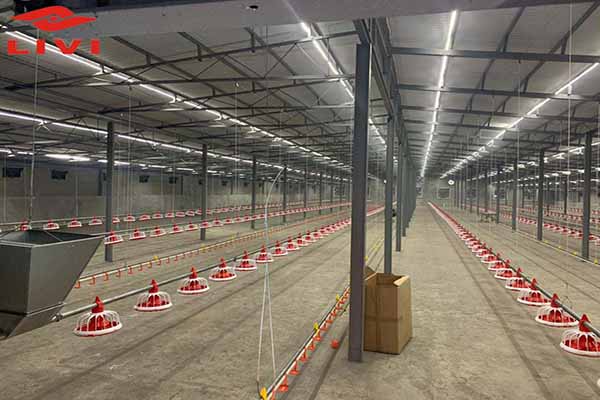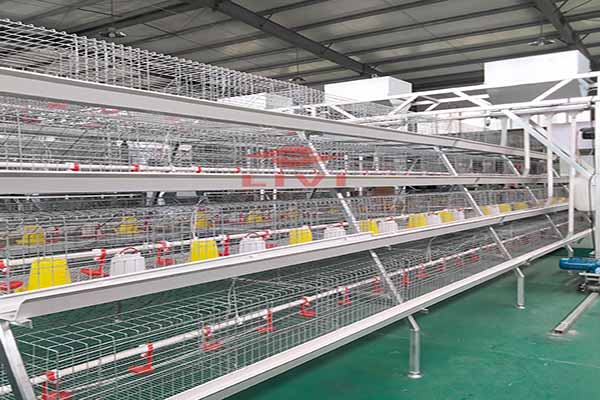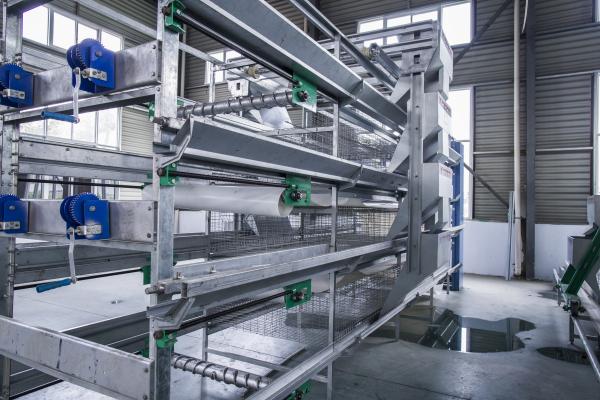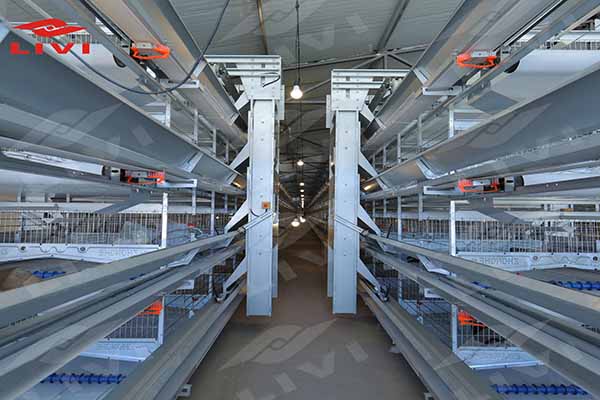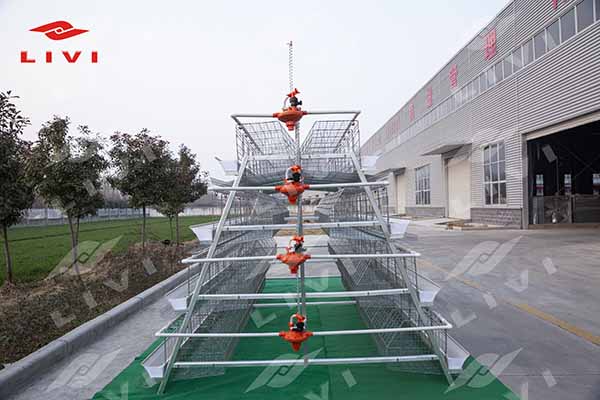Poultry farming has evolved over the years with the advancement of technology, making it more efficient and productive. One of the key components that have revolutionized the way poultry is raised is the poultry chicken cages system. These poultry battery cages are specifically designed to house chickens in a way that maximizes space, improves management, and enhances productivity. In this article, we will delve into the different types of poultry battery cages, their advantages, and how they benefit chicken farmers. We’ll also explore why automated poultry equipment is becoming increasingly popular in large-scale and medium-scale chicken farms.
- 1. What Are Poultry Battery Cages?
- 2. Different Types of Poultry Battery Cages
- 3. What Types of Chickens Are Suitable for Battery Cages?
- 4. Why Are More Poultry Farmers Choosing Automated Poultry Cages?
- 5. Long-Term Benefits of Poultry Battery Cages
- 6. Where to Get Automated Poultry Cages?
1. What Are Poultry Battery Cages?
Poultry battery cages are an advanced farming technology used in the intensive confinement of poultry, specifically for egg production. These cages are designed to hold a large number of chickens in a relatively small space, while still allowing the birds to lay eggs efficiently. The cages are generally made from steel or wire mesh and are often arranged in a multi-tier system to optimize the use of space in a farm setting.
The chicken farming cages are often equipped with various accessories like drinkers, feeders, and egg collection systems, which help streamline operations and improve the overall efficiency of the farm. Over the years, poultry battery cages have undergone several improvements, making them an essential tool for modern poultry farming.
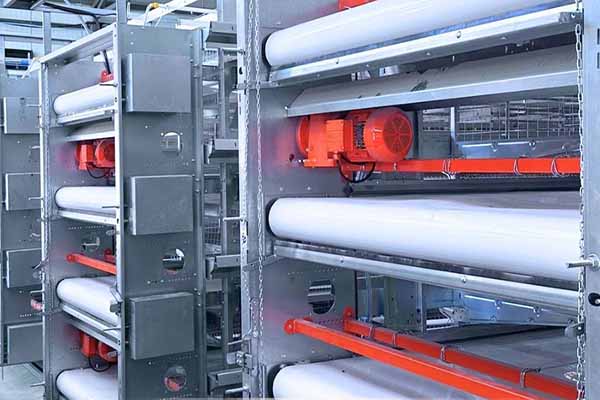
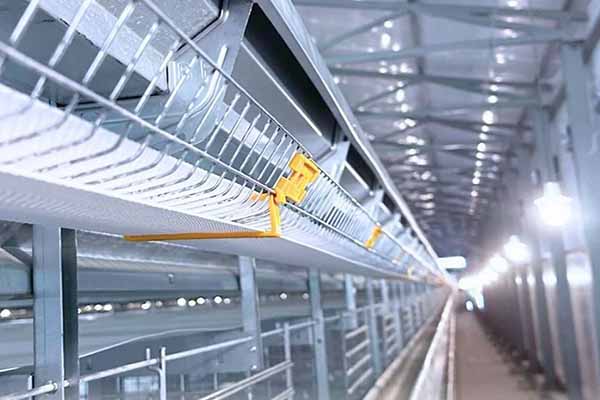
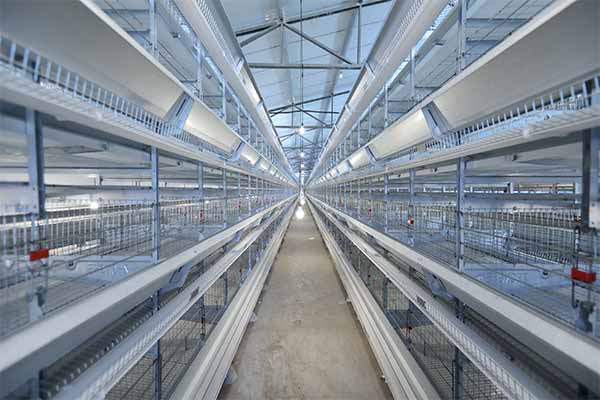
Poultry Battery Cages
2. Different Types of Poultry Chicken Cages System
Poultry battery cages come in several types, each designed to meet the specific needs of farmers and chickens. Here are some of the most commonly used types:
1. Traditional Single-Tier Chicken Cages
The traditional single-tier chicken cages are the most basic form of poultry battery cages. They typically consist of a single row of cages stacked one above the other, but the number of rows may vary depending on the farm size. These cages are simple in design and are suitable for smaller-scale operations.
- Advantages: Easy to manage and maintain, cost-effective for smaller operations.
- Disadvantages: Limited space efficiency as the capacity to house birds is relatively low compared to multi-tier systems.
2. Multi-Tier Chicken Cages
The multi-tier chicken cages are the next step in the evolution of poultry farming. These cages are arranged in multiple levels, often 3 to 6 tiers, which allows for much higher stocking densities. Multi-tier cages are designed to maximize vertical space in a poultry house, making them ideal for medium to large-scale operations.
- Advantages: High stocking density, efficient use of space, and increased egg production. The multi-tier design allows more birds to be housed in the same area, leading to higher productivity.
- Disadvantages: Higher upfront investment compared to single-tier cages, but this is balanced out by the increased output and efficiency.
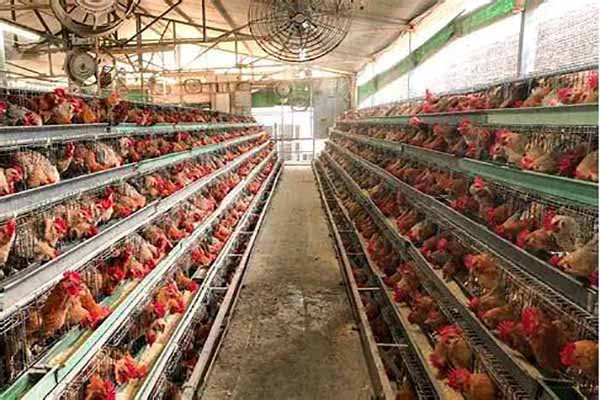
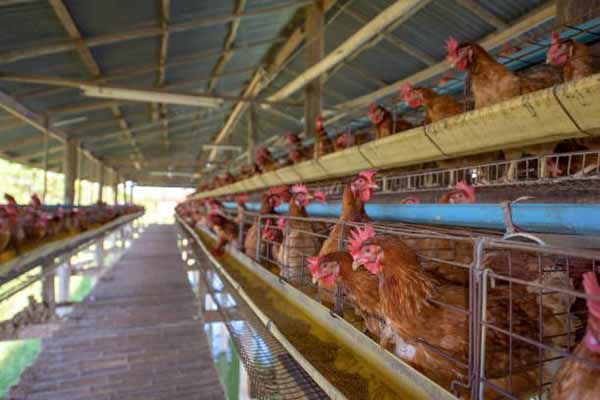
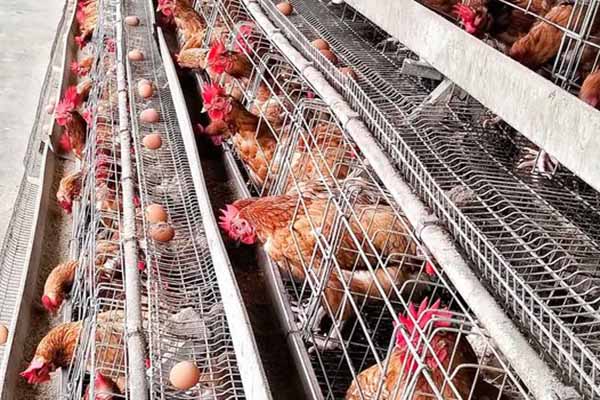
Chicken Battery Cages
3. Improved Version of Chicken Cages (Larger Space and Easier to Operate)
The improved version of chicken cages is a more recent development in poultry farming. These cages offer better space for the birds, allowing for more comfort and reducing the stress that can affect egg production. They often include additional features, such as wider perches and nesting areas, along with improved ventilation systems. The design also focuses on making it easier for farm workers to access and maintain the cages.
- Advantages: Enhanced bird welfare, increased egg-laying capacity, and ease of management. The larger space and better design also reduce mortality rates and improve the health of the flock.
- Disadvantages: These cages are more expensive than the traditional single-tier or multi-tier cages but are ideal for farmers seeking a balance between production efficiency and bird welfare.
4. Automated Poultry Cages (Battery Cages with Automation)
The automated poultry cages, often referred to as battery cages, represent the pinnacle of poultry cage technology. These cages are designed with advanced automation systems that control various aspects of the farming process, such as feeding, watering, egg collection, and waste management.
Automated poultry equipment is typically used in large-scale operations due to its ability to handle large numbers of birds with minimal human intervention. The system is fully integrated with sensors and robotics to ensure smooth operation and maximize productivity.
Advantages:
- Significant reduction in labor costs.
- Greater efficiency in feeding, watering, and egg collection.
- Improved health monitoring and automated waste removal systems reduce disease risks.
- Optimal environment control for improved bird comfort and production.
Disadvantages:
High initial cost due to automation technology. However, the long-term savings in labor and operational efficiency often justify the investment.
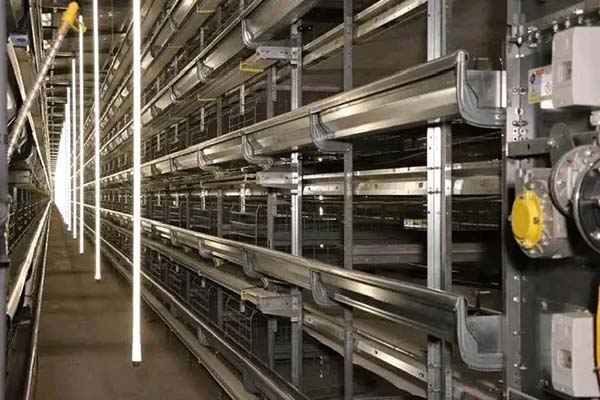
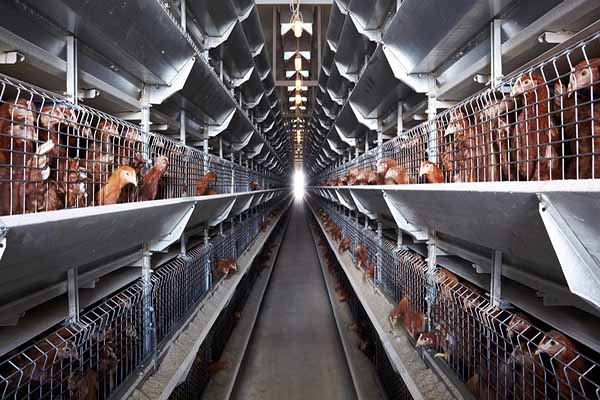
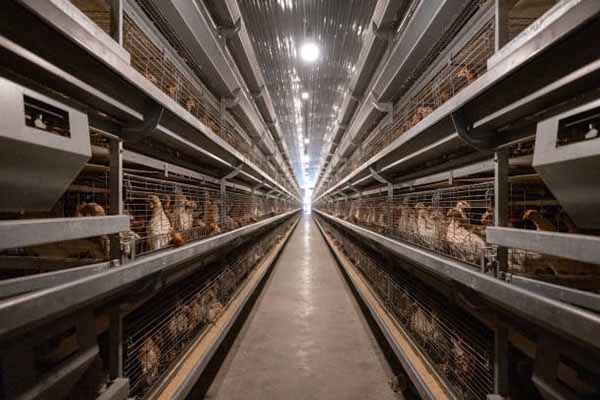
Automatic Poultry Farming Cages
3. What Types of Chickens Are Suitable for Battery Cages?
Battery cages are designed to house different types of poultry, but the specific design may vary depending on the species and purpose of farming. Egg-laying hens, broilers, and chicks all require slightly different cage configurations due to their size, behavior, and productivity.
Egg Laying Hens
For egg-laying hens, the design of chicken cage equipment in battery systems often includes features that make egg collection easier, such as sloped floors or conveyors. These hens are typically housed in the most common form of battery cages, often multi-tier or automated versions, to ensure high productivity.
Broilers (Meat Chickens)
Broilers, raised primarily for meat production, are often kept in larger, more spacious cages than layers. While they can still be housed in battery cages, broiler cages are typically designed to accommodate the birds’ larger size and provide ample space for growth. Broiler cage systems may also include automatic feeding and water systems.
Chicks
Chick cages are specially designed for the young, growing chickens. These cages often feature extra warmth, improved ventilation, and specialized feeding systems to support healthy growth. The cages are more open and allow for easy monitoring of the chicks’ health as they mature into laying hens or broilers.
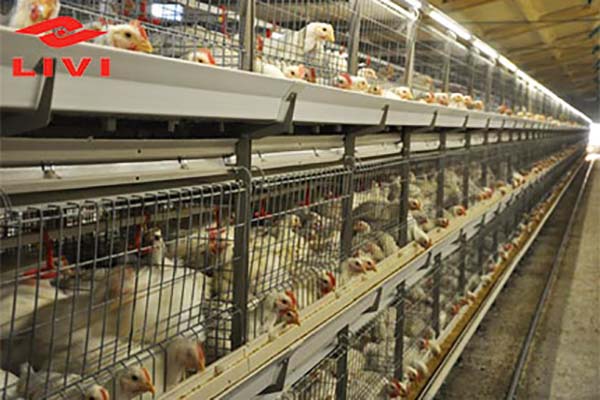
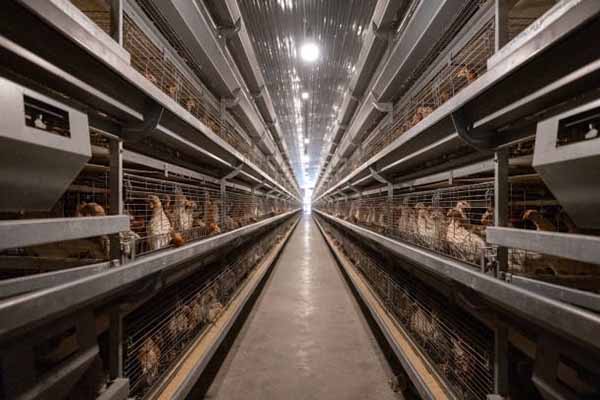
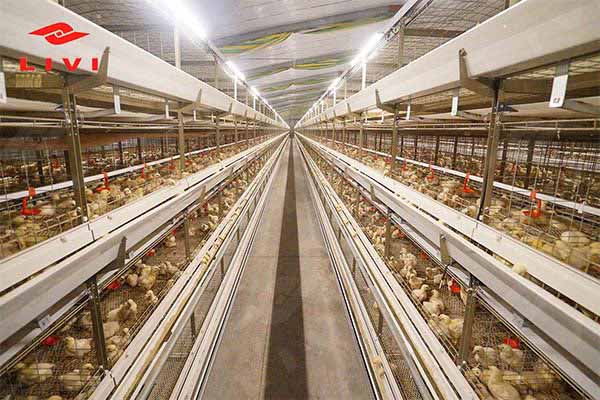
4. Why Are More Poultry Farmers Choosing Automated Poultry Cages?
There is a growing trend among poultry farmers to shift towards automated poultry battery cages for their operations. The main reasons for this shift include:
1. Efficiency and Labor Savings
Automated systems drastically reduce the need for manual labor. With automatic feeding, watering, egg collection, and waste management, farmers can focus on other important aspects of the farm without worrying about daily, time-consuming tasks.
2. Improved Productivity
Automation helps ensure that the poultry receive the optimal amount of food and water, which in turn leads to better growth rates and egg production. Automated monitoring also helps prevent issues like overfeeding or underfeeding, ensuring the birds are always in the best condition for production.
3. Scientific raising of chickens
With automated systems, the environment within the cages can be finely controlled, ensuring that temperature, humidity, and ventilation are all optimized for the chickens. This results in healthier birds, better scientific, and improved overall productivity.
4. Consistency and Accuracy
Automation ensures consistent and accurate management of the farm. Whether it’s adjusting feeding schedules or collecting eggs, automated systems can perform tasks with greater precision, leading to fewer errors and more efficient operations.
5. Scale of Operations
As poultry farms grow in size, managing large numbers of birds manually becomes increasingly difficult. Automated systems allow farms to scale up without the need for a proportional increase in labor.
5. Long-Term Benefits of Poultry Battery Cages
Investing in poultry battery cages offers several long-term benefits for farmers, particularly those running large-scale operations:
1. Increased Production and Profitability
Battery cages enable farmers to house more chickens in less space, which translates into higher egg production and more meat in the case of broilers. The increase in productivity directly correlates to higher profits over time.
2. Cost Savings
Although the initial cost of purchasing poultry battery cages, especially automated ones, may seem high, the savings in labor and improved operational efficiency often result in a quick return on investment.
3. Reduced Disease Spread
Modern poultry cages, especially automated systems, are designed to minimize the spread of disease by keeping the chickens separate and reducing the need for human contact. Waste management systems and better ventilation further contribute to healthier birds.
4. Sustainability
Automated poultry farming systems are also more sustainable. They use resources such as feed, water, and energy more efficiently, reducing waste and the overall environmental impact of the farm.
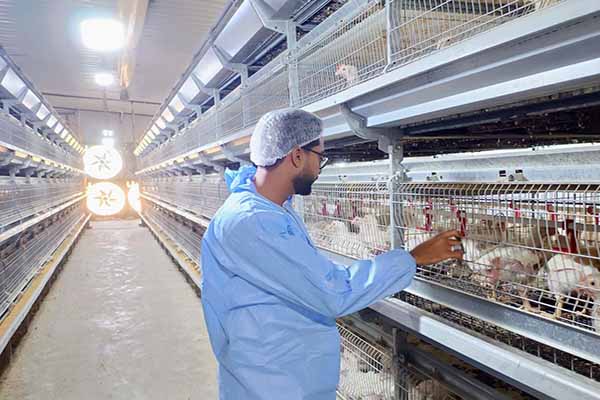

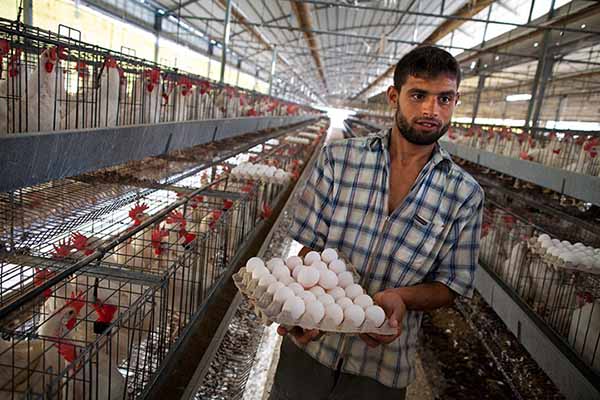
6. Where to Get Automated Poultry Cages?
For farmers looking to invest in automated poultry cage systems, Livi Machinery is a trusted provider of high-quality chicken cage equipment. Livi Machinery offers a range of poultry farming solutions, including automated battery cages, feeding systems, and egg collection equipment. These systems are designed to meet the needs of both small and large-scale operations and are built for durability and efficiency.
To learn more about chicken cage equipment and how automated poultry cages can improve your farm, feel free to contact us at Livi Machinery. Our team of experts will guide you through the process of selecting the right system for your needs.
Leave us a comment in the comment form below.
In conclusion, poultry battery cages are an essential part of modern chicken farming. Whether you’re just starting out or looking to scale up your operation, understanding the different types of poultry cages and the benefits they offer can help you make the right decision for your farm’s success. With the growing trend towards automation, poultry farmers now have access to advanced systems that can streamline operations, improve bird welfare, and boost overall profitability.






